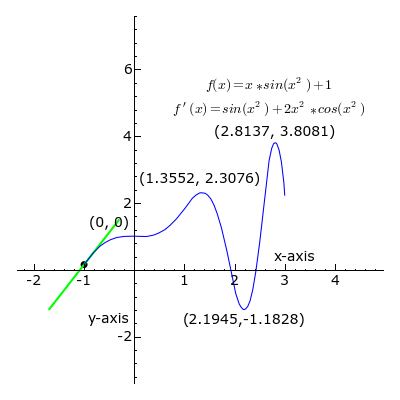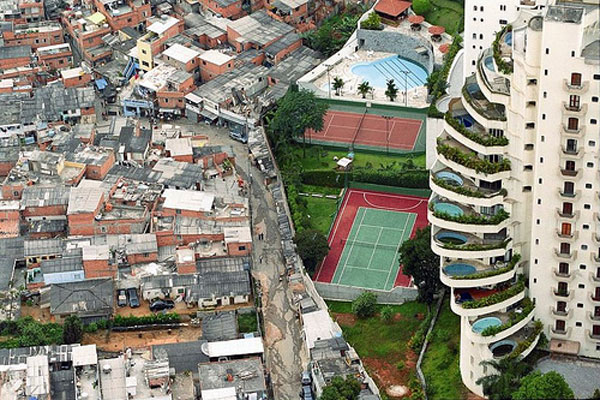In Part 2, we presented a few anecdotal examples of how we would apply the stakeholder framework in the real world. With the framework in mind, it allows us to get some insight into answering the following questions:
- What makes a locality improve or decline (the first derivative: rate of change)?
- What are the factors that truly impact the trajectory of a given neighborhood (the second derivative: the acceleration or deceleration of growth)?
While there are many social factors that impact economic change, I’d begin by taking a fiscal approach and then deriving some of the social ramifications that result from fiscal status.
On a personal note – this subject is very near and dear to me, since I grew up in an urban city called Paterson, NJ, where I went through the public school system up to the end of elementary school. To give you an idea of what Paterson was somewhat like: if you’ve ever seen the movie Lean On Me with Morgan Freeman, I was originally supposed to go to Eastside High School. Luckily I was given the opportunity to go to a private school in another city on a scholarship. I mention my transition from an urban elementary school to an affluent private school because this experience allowed me to see both extremes of the socioeconomic spectrum, which I value greatly since it gave me a very unique perspective… An almost “straddling both sides of the railroad tracks” approach to viewing the world. Coming from an inner city, I initially went into my high school with an antagonistic view of “those spoiled rich kids,” but very quickly (literally – days) realized that they were just like anyone else I had gone to school. The only differences were academic drive and goals (not to mention a few nicer trinkets, but that’s neither here nor there). The only quantifiable difference between the two neighborhoods was money, so why were academic drive and goals different between the two groups? I’m hoping that this discussion will also clarify this point. Now, back to the discussion…
What makes a locality improve or decline (the first derivative: rate of change)?

The first derivative is the slope of the line if you graph net cash over time (image credit: Wikipedia). Of course, more cash over time is better, so an upward slope is good! So what causes an upward slope? Correct! A net increase in cash. This concept is true for all localities: rich neighborhoods, middle class neighborhoods, poor neighborhoods, third world countries, first world countries, small towns, big cities, etc. We have already discussed that affluent neighborhoods fluctuate, but their denizens tend to have an established base of wealth (in the form of savings/assets), so the pool of cash is, by comparison, much more robust than that of a poor neighborhood.
A poor neighborhood is a poor neighborhood because – on average – individuals do not produce much income, and whatever income is produced is insufficient to increase the overall wealth of individuals. Lets draw a quick box around a “generic” poor neighborhood:
- Individuals do not make much income
- Owners of local businesses do not typically live in the same neighborhood as they work (local business profits flow out of the neighborhood)
- The neighborhood generally does not attract affluent individuals to live there due to current conditions (no new cash flowing in)
- Many of the businesses tend to be large chains, a la McDonald’s, Walmart, Kohl’s (net cash flow, or profits, flow out of the neighborhood)
All of this adds up to a net cash flow out of poor neighborhoods, which is why programs such as food stamps exist. This is our downward slope. Without food stamps and other federal subsidy programs, not only would the net cash flow be negative, but the entire ecosystem would be unsustainable – which I would argue that the financial system for poor neighborhoods already is.
What are the factors that truly impact the trajectory of a given neighborhood (the second derivative: the acceleration or deceleration of growth)?

The second derivative is the rate of change in the slope of the line (image credit: Wikipedia). In our application, a poor neighborhood losing money and progressively losing more would be a downward sloping line getting steeper over time. Conversely, a rich neighborhood increasing in wealth but whose growth rate was decreasing would be an upward sloping line getting shallower over time. In both cases, this is represented by the slope of the line rotating in a clock-wise direction.
Ultimately, the acceleration/deceleration of change in cash is impacted by an alteration of any of the aforementioned variables (among other things). When working-class neighborhoods begin attracting wealthier people who eventually displace many of the prior residents, this process is called gentrification. Urban dictionary has coined the phrase “Ghettofication” which is the exact opposite of gentrification.
Now what?
Some people say that gentrification is the answer to poverty, but I would argue that gentrification does not necessarily improve the lives of the impoverished individuals that inhabited a specific locality, due to displacement. The individuals that manage to stick around through the gentrification process definitely do see improvement to their lives in the form of cleaner neighborhoods, better services, and reduced crime, but it does not necessarily increase the wealth of those individuals. Gentrification tends to be a non-closed system – poorer people move out, richer people move in.
The only way to truly help impoverished areas is by improving the cash flow equation to those neighborhoods, thereby decreasing and eventually eliminating the need for governmental subsidies. My personal opinion is that many people are ashamed to be recipients of government aid; Receiving it is almost like the admission that they are not able to support themselves financially. Another problem is the abuse of the system, but that would not be a problem if the underlying causes of poverty were addressed.
Please don’t get me wrong here, as I’m a HUGE supporter of free market capitalism, but I don’t think that poverty is a problem that can be solved without some kind of intervention or action by either the government or with the full support of impoverished individuals. Think about all of the major problems that exist with poverty: cash flowing out of the neighborhoods, obesity/malnutrition (interesting paradox, isn’t it?), crime, and drugs (although the problem of drugs isn’t just a poverty thing… it just has a more visible impact in poorer neighborhoods). If impoverished neighborhoods could be made into progressively more sustainable economic systems, many of the issues would resolve themselves.
Imagine a neighborhood where former slum-lords had the incentive and a vested interest to improve the properties that they own. I would propose non-remote ownership or real estate in impoverished neighborhoods. Real estate is a particularly poignant example of an incentive system that has gone completely out of wack. The owners of many homes in poor neighborhoods tend to live elsewhere, collect rent checks, and put nothing back into the properties that they manage. They effectively suck cash from the local economic system… Multiply that by every slum-lord in a neighborhood and you can see where a large proportion of the cash outflow is coming from. Until people start caring for the neighborhoods, there is no way things will improve.
Another cash suck for these neighborhoods are the big box stores and fast food chains. Yes, they employ individuals in the neighborhood, but the wage they pay is only a pittance in comparison to the profits that are returned to the franchise owners/ business owners that live remotely. I don’t believe that anything should be done via regulation to address profit outflow, though. This is more of a matter of consumer education, which is partially why I am writing this.
Consumers have the opportunity to literally vote with their wallet when it comes to what organizations they support with their patronage. An impoverished individual should not support businesses that act as cash leaches for their neighborhoods. Many people argue that they save money by shopping at specific locations for food or other goods. I would argue that they save money in the short-term, but adversely affect their long-term wealth since they do not personally profit from that company’s profit. In saying this, it is an interesting notion for individuals to purchase a basket of stocks based upon their consumer activity. Would it actually change anything if consumers invested proportional to their patronage?
Finally, is there a way to encourage external investment to bring cash into the neighborhoods? Typically banks have played this role in providing lending to small business owners, but these small business owners have been pushed out by large chain stores. I really think that this equation would be brought back into equilibrium of consumer habits change according to a values-based patronage model, rather than a short-term view financial model.
In summary
The stakeholder model filters down what is happening inside neighborhoods into tangible facets and allows for easier analysis. Many things can change, but the most impactful would be for individuals to become educated as to how their decisions affect their long-term livelihood. Consumer education truly is the key, which is why the educational system has to produce motivated individuals.
In my analysis of my own experience, I noted the difference in motivation between students at my elementary school and my high school. I really boiled the difference down to performance expectations both for themselves and from others. My classmates in elementary school had the perception that society did not have very high expectations for them, so they, consequently, did not have high expectations for themselves . This could be due to societal influence or it could be situation-specific influences (parental or social), but the general trend was that urban students’ educational self-confidence was less than that of the affluent students’. If society begins increase the expectation of urban students, I truly think that they will rise to the occasion. If the educational system continues to pump people through the system like an industrial process, people will not value their education because they don’t understand the big picture that their knowledge will give them the tools to better themselves in the long term. Some food for thought…
People must begin to take ownership of their financial decisions and understand what impact those decisions have on themselves and others. Education and knowledge are just the beginning of improvement. I’m sure that I missed something in my analysis, but I would rather that my flawed analysis be the catalyst for a change in thought than the situation stay unchanged or worsen. Thanks for reading!

